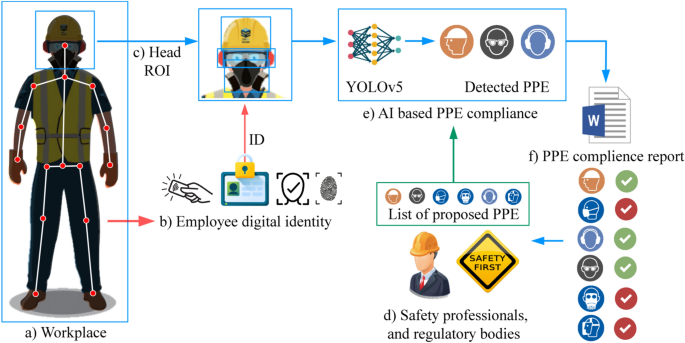Course Progress Bar
0% Complete
0/43 Steps
Course Navigation
Return to HSE LEVEL 1,2 AND 3 COURSE
Proper selection, use, and maintenance of PPE
Proper selection, use, and maintenance of Personal Protective Equipment (PPE) are essential to ensure that it effectively protects individuals from workplace hazards. Here are guidelines for each aspect:

1. Proper Selection of PPE:
- Conduct a Hazard Assessment: Identify the specific hazards present in your workplace. This assessment will help determine the types of PPE needed.
- Choose Appropriate PPE: Select PPE that is designed to protect against the identified hazards. Ensure that it meets relevant safety standards and regulations.
- Consider Fit and Comfort: PPE should fit properly and comfortably to encourage regular use. Ill-fitting PPE can be less effective and cause discomfort or fatigue.
- Evaluate Compatibility: Ensure that different pieces of PPE can be used together without compromising safety. For example, safety glasses should fit comfortably with earmuffs.
- Understand Limitations: Know the limitations of the chosen PPE. Some PPE may have specific conditions or time limits for use. For example, respirators have defined protection factors and must be selected accordingly.
2. Proper Use of PPE:
- Training and Education: Provide comprehensive training to employees on the correct use of PPE. This includes how to put on, adjust, remove, and maintain PPE.
- Inspect Before Use: Before each use, inspect PPE for signs of damage, wear, or deterioration. This includes checking for cracks, tears, missing parts, and proper functionality.
- Wear PPE Consistently: Make wearing PPE a consistent practice in areas where it is required. This includes donning PPE before entering a hazardous area and removing it only after leaving.
- Follow Manufacturer Instructions: Adhere to the manufacturer’s guidelines for PPE use, including any specific maintenance and cleaning instructions.
- Proper Fit: Ensure that PPE fits correctly. Adjust straps, fasteners, or seals as needed to achieve a secure and comfortable fit.
- Do Not Modify PPE: Do not alter or modify PPE unless authorized by the manufacturer. Modifications can compromise safety.
- Replace Damaged PPE: If PPE becomes damaged or no longer provides adequate protection, replace it immediately. Do not attempt to repair it unless trained and authorized to do so.
- Use All Required PPE: In situations where multiple hazards are present, wear all required PPE. For example, if working with chemicals that pose both eye and respiratory hazards, use safety goggles and a respirator simultaneously.
- Keep PPE Clean: Regularly clean and disinfect PPE as necessary to prevent contamination or the spread of hazardous substances.
3. Proper Maintenance of PPE:
- Regular Inspection: Establish a schedule for routine inspections of PPE. Depending on the type of PPE, inspections may be daily, weekly, or monthly.
- Cleaning and Disinfecting: Clean PPE regularly using recommended cleaning agents. Follow manufacturer instructions for cleaning and disinfection methods.
- Storage: Store PPE in a clean, dry, and well-ventilated area when not in use. Proper storage helps prevent damage and contamination.
- Repair and Replacement: Promptly repair or replace damaged or worn-out PPE. Do not use PPE that is compromised in any way.
- Documentation: Maintain records of PPE inspections, repairs, and replacements. This documentation helps track the condition of PPE and compliance with safety standards.
- Retirement: Establish criteria for retiring PPE when it reaches the end of its usable life. Dispose of retired PPE following appropriate guidelines and regulations.
4. Employee Responsibility:
- Encourage employees to take personal responsibility for using PPE correctly. Emphasize the importance of their safety and the safety of their colleagues.
- Create a culture of safety where PPE use is viewed as a non-negotiable part of the job.
- Provide avenues for employees to report damaged or inadequate PPE and address their concerns promptly.
By following these guidelines for proper selection, use, and maintenance of PPE, organizations can ensure that employees are adequately protected from workplace hazards, reduce the risk of injuries and illnesses, and maintain compliance with safety regulations.
